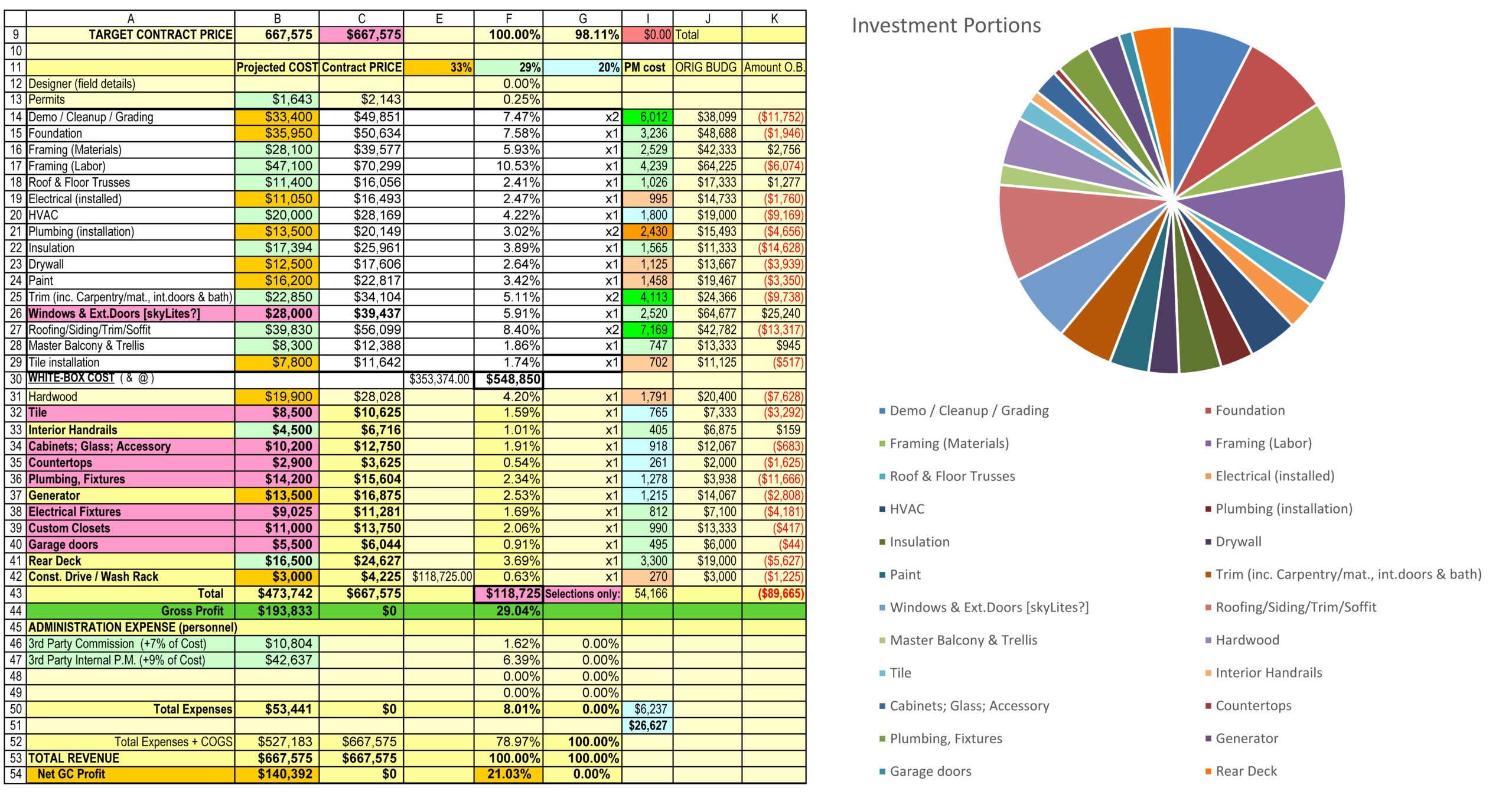Many of my client’s customers approached home additions and renovations from the standpoint of “what is it possible to do” instead of “what do we need”. This is where a manager goes from comparing apples & oranges, to adding bananas and walnuts and avocados to the mix. It can be really difficult to evaluate non-comparables. Only the family that owns the property can decide if one thing that has nothing to do with another aspect of a project is more valuable to them. There is a lot more to it than just “what can we fit, and can we afford it”.
So I developed a “Feasibility Study” process that would look at all the things important to the future of the family:
What were each individual’s needs, and how long term are those?
How much equity is in the house?
How would the future home configuration statistics stack up against other comps in the neighborhood?
Do they plan on living there for 5 years, 10 years, or after retirement?
If planning with children involved, where will those kids likely be in 3-5 years? College? Married?
“Don’t plan for today, when by the time the project is done, the way everyone will use it has already changed”.
I also took the projected Budget tool I had compiled earlier for coaching home builders, and modified it to forecast components of project costs (materials, trade contractor costs, GC involvement, and vendor estimating models), and added an interactive pie graphic that would display whether the breakdown of the project matched the priorities of the family. If they could see that something they asked for, but was not high on their priority list, cost a much larger portion than its value to them (“don’t spend 18% of your project budget on something that only matters to you 7% overall”), they might reshuffle their top 5 priorities. At its core was the “White Box” principle I originated to show what the shell structure should cost (drywall, HVAC, power, water – but no finishes or fixtures). This was a good way to forecast the future budget before customers start shopping for selections. Plus, it was a way to find out what everything costs on paper before you start committing to it.
It eventually morphed into a decision experiment that would inform whether they even wanted to stay in the house that badly. It really helps to separate out the nostalgic from the practical when you take a few months to analyze something this big from all angles. I remember the first time it looked like the family’s decision was going to be not to build. I thought my reputation may take a hit, after someone spends that much time and money in planning something that will never be built. After giving their realtor new parameters and finding the perfect home ready to move in, they told me:
“Are you kidding? This is the best $4k we ever spent. We haven’t been able to find any realtor, architect, or financial consultant that could give us information we could act on. You saved us 9 months of our life, all the anxiety of renovation, all for a result that we may have just concluded was ‘meh’? And who knows if we would not have priced ourselves out of the neighborhood. Instead we are on a property we all love within 8 weeks of changing our minds”.
That was when I realized the power in being honest and giving people all the information they need to make a choice that fits the way they live best. Not telling them what to do. “Should I stay or should I go” – like Love it or List it, without the script and cringey camera cut-aways.

